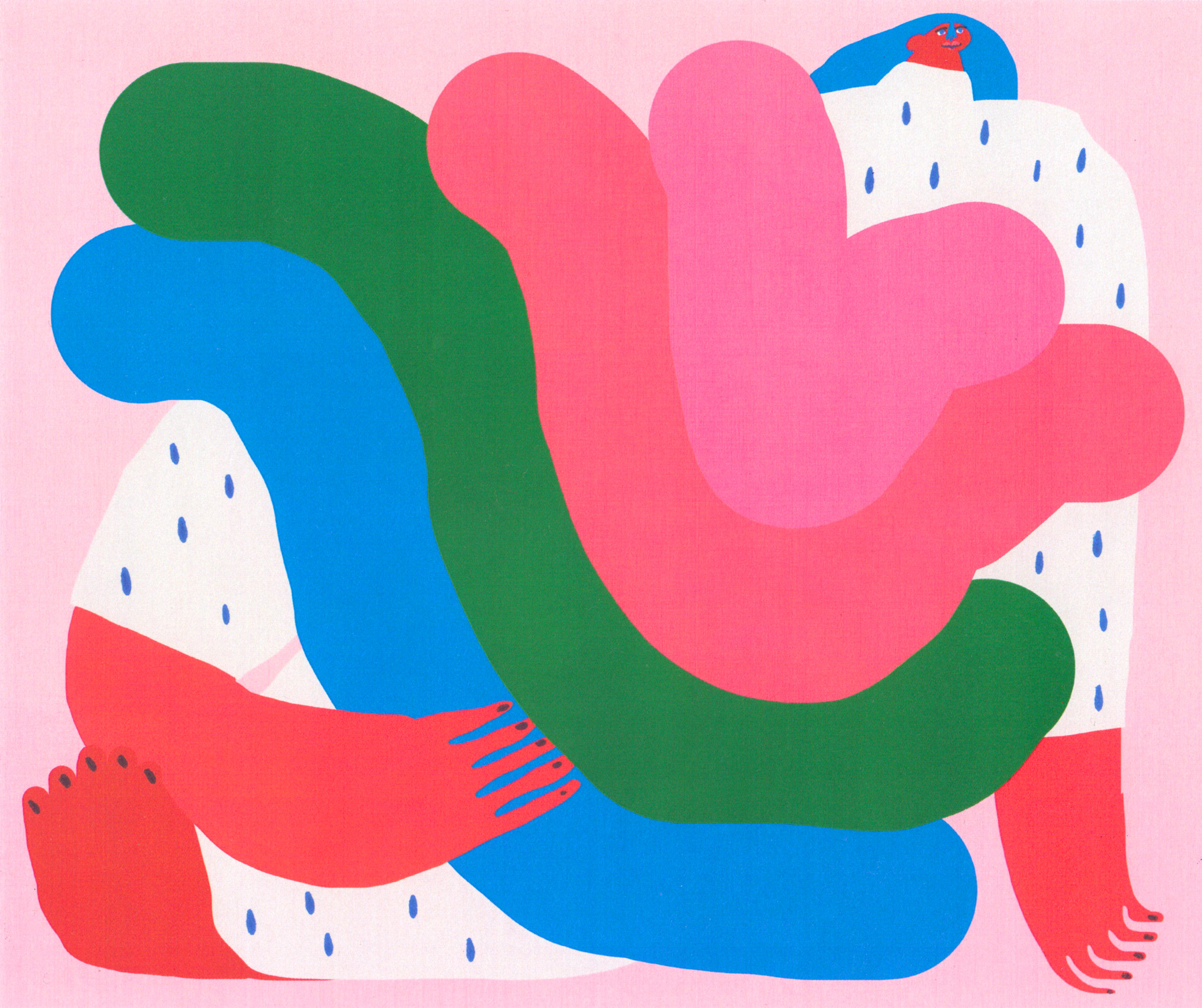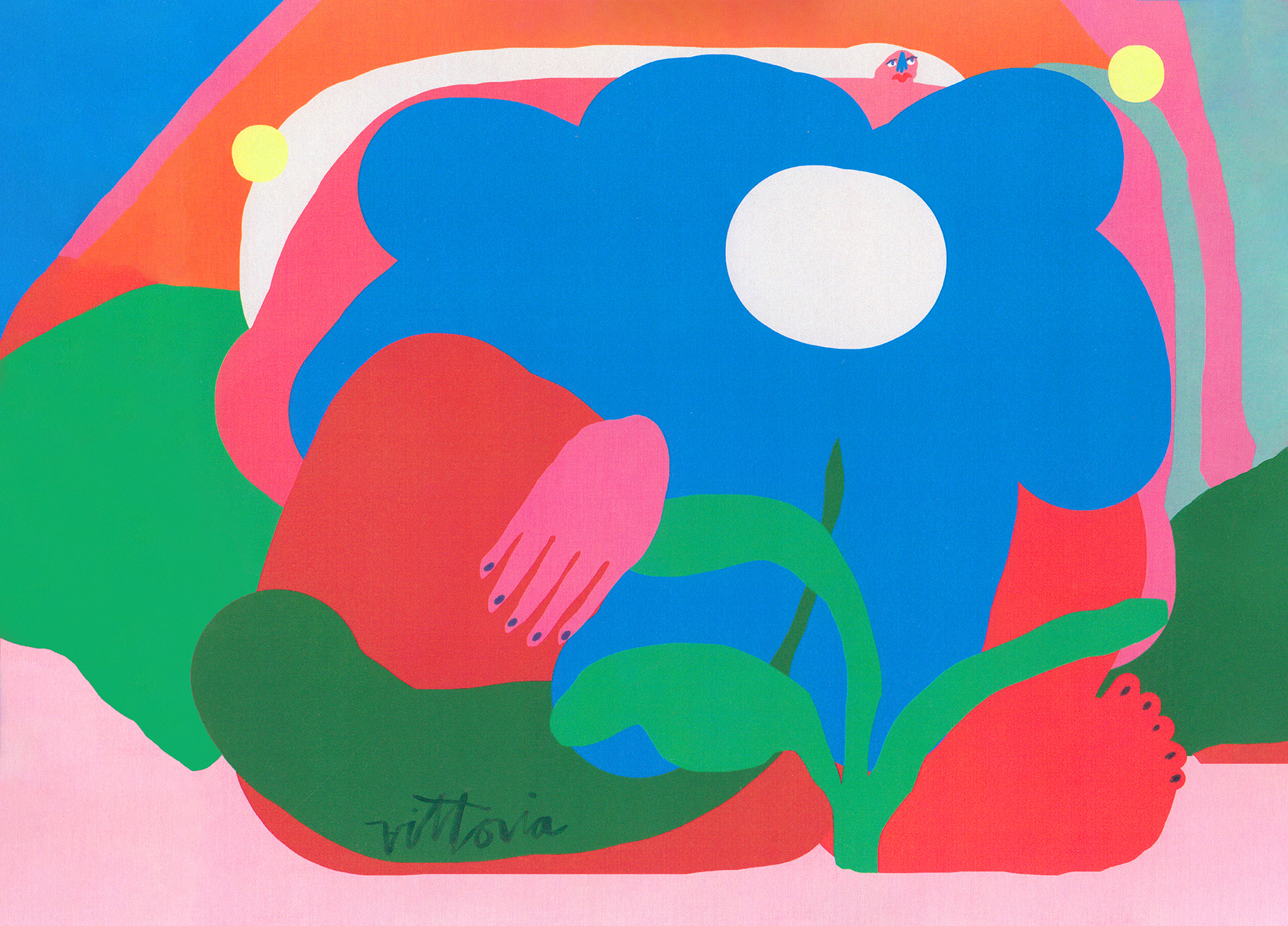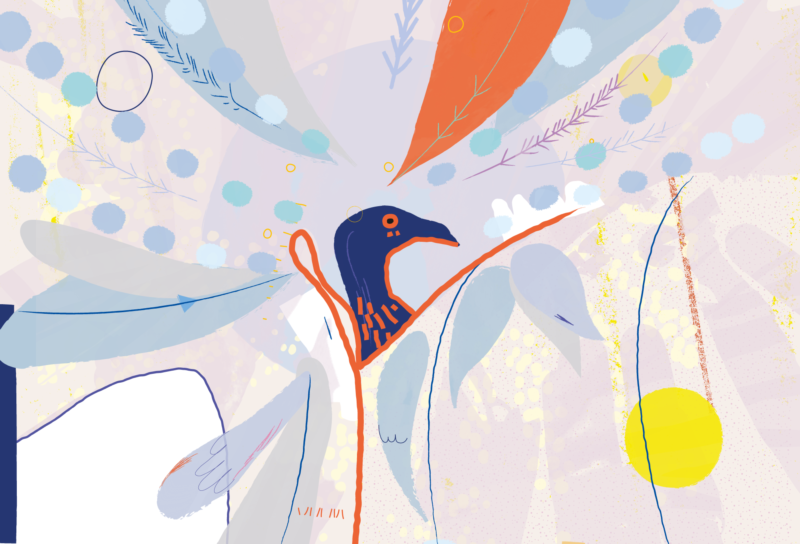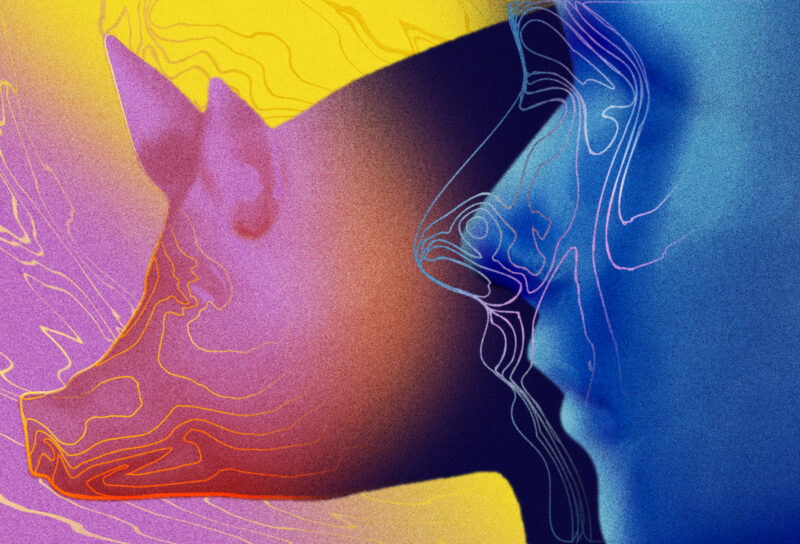I read and write a lot about the beauty industry, but my favorite descriptions of the power of beauty have little to do with makeup, cosmetics, surgery, or supplements. All these things are tokens of beauty but they’re not what it’s about. Beauty is about the fungibility of power, the negotiation and pursuit of it, the sacrifices made to it like an angry and vengeful God. Putting on lipstick before a major event is a war cry; before a job interview, lipstick is a prayer as well as armor. The old myths say that beauty can lead countries to war, and that men who follow a siren’s call always drown. And they’re right, in a way: beauty is dangerous because it trades in power, and power yields nothing without demand.
Beauty is about doing whatever you need to do to get a better slice of the world. Sure, it’s about feeling good in your skin, feeling desired and seen the way you want, but those things also imply being in control of your own desirability, your own narrative — taking control of your power. People will do a great deal for beauty, just as they will for any other powerful form of control. It’s only pragmatic. Beautiful people are thought to have it easier, and there is statistical evidence to back this up. During childhood, they get more attention from their parents and teachers. As adults, they get better jobs. In court, they receive more lenient sentences. No wonder we’re so obsessed with this cruel and elusive quality. Society doesn’t give us much choice.
But what happens when this social pressure to be beautiful is enforced as a matter of government policy? You may be surprised to find that this was the case in the United States until the 1970s. So-called “ugly laws” were on the books in many states, discriminating against people deemed unsightly. This neglected chapter in American history is a cautionary tale best heeded, as many of the modes of thinking that produced it are still at work today. It begs important questions. What cultural and scientific ideas inspired these ugly laws, and what impact did they have on our world? What can we learn from the activists who dedicated their lives to repealing them, and how do we prevent these old forms of discrimination from being perpetuated by new technologies?
Legislating Beauty
Passed at the beginning of the eugenics movement in the late 19th century, ugly laws legislated a very narrow conception of beauty and worth, and criminalized those who didn’t fit that ideal. They treated ugly people as disabled and disabled people as ugly, and sought to discourage both from entering public view.
Francis Galton coined the term eugenics in 1904 to describe systematic efforts to “improve the race,” but the ideas he described were widespread long before he branded them so succinctly. Ugly laws were but one way of working towards a perfect stock. They were legitimized by eugenic modes of analysis, which used mathematical calculations to determine the ideal face, and drew on ethical arguments that associated beauty with health and moral hygiene.

These laws were calibrated differently state by state, but always targeted the same people: those who were visibly disabled and poor. They harnessed beauty as a biopower for political and cultural whitewashing. They were intertwined with immigration policy and panhandling laws, local ordinances and federal policies around education and city planning.
One of the first ugly laws was specifically geared towards eliminating street begging. It served to discourage people already abandoned by society from asking the public for help. The Chicago 1881 ordinance was particularly explicit: “Any person who is diseased, maimed, mutilated, or in any way deformed, so as to be an unsightly or disgusting object, or an improper person to be allowed in or on the streets, highways, thoroughfares, or public places in this city, shall not therein or thereon expose himself to public view, under the penalty of a fine.” The Chicago Police sought out “ugly” beggars and poured acid on them in 1902. In San Francisco, violators of ugly laws were either fined or sent to work farms. Others were simply forced out of town. This was an attempt to curate a more pristine “social order,” where humanity was more healthy, more wealthy, and invariably also more white.
Not coincidentally, these laws coincided and overlapped with other legal pushes for racial purity and exclusion. The Page Act of 1875 and the 1882 Chinese Exclusion Act were lobbied for by eugenicists, fearing the “Yellow Peril” of Asian immigrants. The anti-miscegenation Racial Integrity Act was developed hand-in-hand with Virginia’s Sterilization Act of 1924 — one of thirty-two states that passed sterilization laws from 1907 to 1937. These sterilization laws systematically targeted Black, Native, and Asian women who were also more likely to be poor than their white counterparts.
Eugenic ideals rightly seem monstrous now, but at the time they were widely considered popular, logical, even altruistic for the good of mankind. Fully indulged, they led to genocide.
The Logical Extreme
Naturally compatible with nationalist and fascist thought, the eugenic ideal of beauty spread around the Western world in the 19th century, and was implemented to horrific effect in Europe’s colonies. It was most comprehensively and memorably applied by the Nazis.
The Nazis thought of themselves as aesthetes. Their public spectacles revolved around displays of physical perfection and natural “Aryan” beauty. Their posters showed blonde families with symmetrical faces and perfect posture; and Jews with hunched backs, asymmetrical faces, crooked mouths, and huge noses. Like American racists and European colonists before them, the Nazis exaggerated the stereotypical features of the minority they were oppressing, rendering them sub-human to justify treating them that way. The Nazis were disgusted by America’s racial diversity, but were keen students of its racial policies. American Eugenicists (like Harry Laughlin) influenced the Nazis’ racial pseudo-science; a few of them even visited Germany after Hitler took power in 1933 to help craft policy and programs.
That year, the Third Reich implemented The Law for the Prevention of Genetically Diseased Offspring. Two years after, they passed laws that banned the “hereditarily unhealthy” from marrying, and provided tax breaks to genetically “superior” couples. A “Genetic Health Court” was created to ordain what people deserved to be sterilized, putting people on trial for miscegenation (with Jewish people), depression, homelessness, or queerness. American eugenicists nodded approvingly. One notable visitor to Germany, Lothrop Stoddard, reported home that the Nazis were “weeding out the worst strains in Germanic stock in a scientific and truly humanitarian way.” Charitable organizations such as the Carnegie, Rockefeller, and Russell Sage philanthropies were very taken by his reports and funded eugenic research in both Germany and the United States.

The Nazis soon took eugenics to its extreme, turning large swaths of Eastern Europe into a laboratory for their population experiments. Their race scientists built research departments in the concentration camps. They spent their workdays conducting unmentionable experiments on captive subjects, and their evenings dining with their families in suburban comfort. Their eugenic ideals were enforced on all fronts of the Shoah.
One anonymous survivor of Auschwitz-Birkenau wrote of her story so explicitly that it never left me. Shortly after arriving at the vast network of camps, she was forced to strip down, shower, and stand at attention for the guards. She noticed that the Nazi inspectors were scrutinizing the new arrivals’ bodies for imperfections. While other women covered up their privates, she draped her clothes over her right arm, covering the scar from her recent appendix surgery. “This action saved my life, as the Nazis only wanted perfectly beautiful bodies that could work hard,” she wrote.
At Nuremberg, eugenics was also on trial. The Nazi doctors referred to American eugenicists, like Oliver Holmes and Madison Grant, as their mentors while detailing their crimes. They came armed with photographs and diagrams of human skulls, outlining the visual and mathematical formulas that aimed to render racism both scientifically valid and politically necessary. This led to the conception of the Nuremberg Code, a set of research ethics that provided the basis for modern concepts like informed consent in medical experimentation.
The Nazis’ evil would be rightfully remembered as unique, but this singularity may have distracted us from seeing some of the same trends at work in our own society.
While the Nazis may have temporarily discredited their anglophone colleagues, they also did them the favor of overshadowing their crimes. The Nazis’ evil would be rightfully remembered as unique, but this singularity may have distracted us from seeing some of the same trends at work in our own society.
Though the post-WWII era did see a dismantling of some eugenic practices, it was never eliminated entirely. For example, forced sterilization, ruled constitutional by the Supreme Court in 1927, was imposed on specific American populations until the 1980s. The last known forced sterilization in the United States happened in 1981. But in a study done just two years before, approximately 70 percent of US hospitals failed to follow the Department of Health and Human Service guidelines regarding informed consent for sterilization. The populations most victimized by these decisions were the same groups of people criminalized by earlier ugly laws: the disabled, the chronically ill, the queer and the poor, often Black or Brown or Asian or Indigenous women.
Ugly laws may have been repealed — the last of them by the 1980s — but that doesn’t mean the persistent beliefs that undergirded them have disappeared altogether. Our perceptions of worth and beauty have shapeshifted and are now enforced through subtler codes. But that’s already a signpost of hard-fought progress. Ugly laws were ableist, racist, classist codes, and they were only dismantled due to the unceasing efforts of disability justice advocates. The people who suffered under these laws liberated themselves.
Fighting Back
Robert Burgdorf Jr. was born partially paralyzed. He wanted to become an electrician but was denied an apprenticeship because of his disability. Instead, he became a lawyer and dedicated his life to making sure the discrimination he had experienced would become a thing of the past. In 1975, he and his wife Marcia Pearce Burgdorf published their landmark work on disability, “A history of Unequal Treatment: The Qualifications of Handicapped Persons as a ‘Suspect Class’ Under the Equal Protection Clause.” In it, they coined the term “ugly law,” citing the wording of the Chicago Municipal Code and the original ugly ordinances in Chicago, Columbus, and Omaha.
Burgdorf went on to draft the Americans with Disabilities Act in 1987. That watershed moment was only possible thanks to decades of groundwork by dedicated organizers across the country. In 1977, more than 100 disabled activists staged a sit-in for 26 days in San Francisco, demanding more protections in the soon-to-pass Rehabilitation Act. The concessions they won helped lay the groundwork for the ADA.
Before the ADA passed, people were still being fined and punished for being visibly disabled in public in Portland, Oregon. Activists drew on these reports — “Begging Law Punishes Only the Ugly,” according to one headline — as they laid out their battle plan to challenge society’s conception of ugliness, disability, and punishment.
They knew very well how to weaponize the aesthetics of visibility, as it had been used against them for so long. They organized the Capitol Crawl in March, 1990, where over 1,000 people marched to demand the passing of the ADA. It culminated in sixty protestors getting out of their wheelchairs and mobility aids to crawl up the steps of the Capitol. The youngest participant was 8-year old Jennifer Keelan, who by then had already been protesting for two years. The crawl was a widely publicized demonstration of how inaccessible architecture limits the lives of those with disabilities. The ADA was signed into law four months later.
Without it, there would be no protections for people with disabilities regarding access to jobs, schools, and transportation. Before the ADA, people using wheelchairs who wanted to ride a bus had to abandon their wheelchairs. Restaurants and grocery stores were legally entitled to refuse service to people with disabilities. The doors opened by these activists meant that, in future, people with disabilities could open doors themselves, literally and metaphorically.
“I was born with a disability. I have short arms, I’m missing fingers, and I don’t have thumbs. The ADA has made simple things like opening doors easier for me to accomplish…the ADA’s guidelines say that anything that is operable to open doors, to do anything like that, should be able to be done with one hand and should not require tight grasping…So people like me without thumbs have an easier time opening them, but also people with arthritis, people who are carrying a lot of things. It makes the simple task of just opening a door much more accessible for a wider variety of people,” blind businessman Jim Hutchings explained on the 30th anniversary of the ADA’s passage.
Disability justice movements spearheaded by groups like ADAPT, who organized the Capitol Crawl, pushed for a world that was open to people with all kinds of bodies, all kinds of lived experiences. They fought for specific policies and a universal principle: to undo prejudices that tell some people that the particularities of their bodies limit their humanity; to proclaim that all bodies contain beauty in all forms. We honor their bravery and creativity, and still we should be offended that our society forces the most marginalized people to constantly campaign for their own humanity.

A Lot of Work Left to Do
Thirty years after the ADA’s passage, the fight for justice still has a long way to go. Only a handful of states, cities, and counties prohibit discrimination based on appearance explicitly: Michigan, San Francisco, D.C, Santa Cruz, Madison, Urbana (Illinois), and Howard County (Maryland). There is no federal prohibition of appearance-based discrimination on the record, even if some categories of appearance are protected — race, national origin, sex, age, disability. As it stands in 2020, only five states explicitly ban discrimination based on hairstyle. California was one of the first, passing The CROWN Act to protect natural hair and dispel myths around what textured hair represents in a “professional” workplace. Of course, the legislature isn’t the only place this battle is being fought.
Social movements like #cripthevote and #deafpower all center the experience of marginalized people and aim to define and expand previous definitions of beauty, power, and opportunity. Disabled people have taken back the word “crip” without apology and ask for independence and power, not pity. There are more disabled models signed to international agencies than ever before, and more disabled people on television writing and acting in their own stories. Participants in #hospitalglam, a social media movement where the disabled and hospitalized create selfies in medical settings, show that they are more than ill, they are creators in control of their aesthetic perception. They remind us that beauty is subjective, and that all vantage points must be included in that subjectivity.
The people who suffered under these laws liberated themselves.
This struggle requires reconsidering the power dynamics of popular aesthetics, and abandoning the false binary of normalcy altogether. Disability itself wouldn’t limit people if able-bodied societies weren’t so inflexible — if people around them were taught that there are multiple ways of moving through the world. If beauty is about the fungibility of power, we have historically taken that to mean there is only one way to have power. These movements prove that wrong.
The eugenics movement has not left us, and neither have ugly laws — not really. The rules that determine who gets to be visible and comfortable in society are constantly redefined to suit new technologies, including synthetic biology. They beg the question: How do you design a world where every kind of human can thrive? Are people from all different backgrounds and abilities involved in engineering that solution, or does it spring from an exclusionary definition of progress?
The world still isn’t ready to accept all different forms of beauty. Disabled people and poor people are still more likely to live impoverished and shorter lives. Harvard molecular engineer George Church is said to be designing a dating app that promises to be a “genetic matchmaker,” which he envisions running in the background of other dating apps to prevent specific people from meeting and having children. Marginalized people may not be banned from the dating pool, but they are being intentionally written out of technologies meant to connect strangers. People may not be fined on the streets for their appearance, but they are still being stopped and frisked for the color of their skin. People may not be run out of town with pitchforks but that doesn’t mean they have enough job opportunities and accessible housing to live wherever they want. There are no more laws on the books explicitly promoting “racial hygiene,” but restricting immigration and setting up internment camps at the border advance that same cause.
In her book on ugly laws, Susan Schweik writes that “beauty may only be skin deep, but the damages associated with its pursuit go much deeper.” We still grapple with these concepts around beauty and ugliness. The best we can do is try harder to develop more complex definitions of what they can represent — and how to make these subjective markers less deterministic. None of us know what is best for all of us. What we do know is that there is more beauty around us than we could ever imagine, and not only in the people and places we expect. This shift of perspective can change the world — it makes other worlds possible, where every kind of experience matters, and everyone counts.
This essay is in Grow’s second annual print issue. To read more pieces like it, order our Beauty Issue now.



